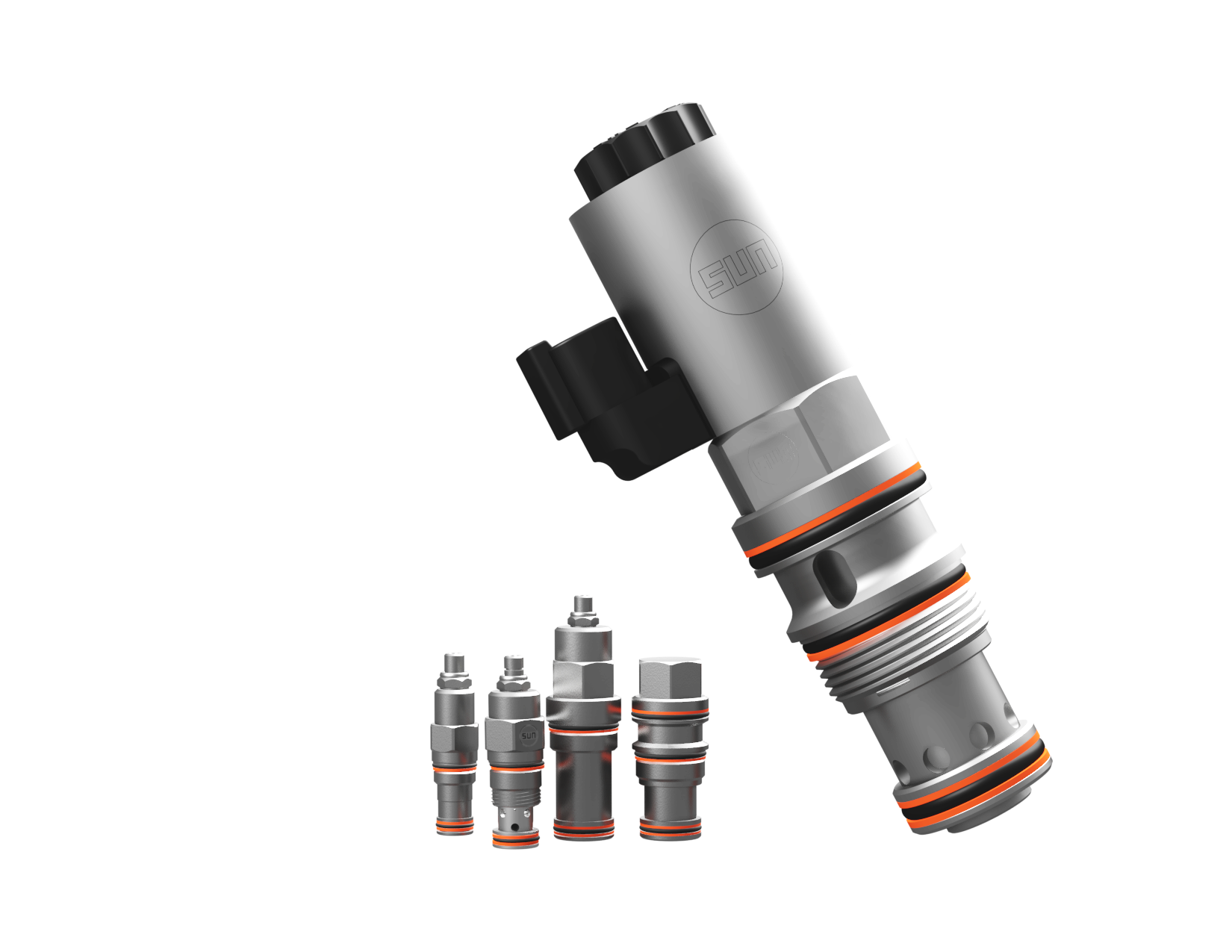
A flow control valve (also known as a flow regulating valve) is a common component in hydraulic systems and is used to regulate or restrict the flow rate of fluid. The valve does not directly affect the pressure, but instead controls how quickly a function is performed—for example, how fast a cylinder moves or how quickly a hydraulic motor rotates. Flow control valves are used to manage the flow in one or more functions, for instance by restricting flow, distributing it to multiple functions or prioritizing flow to a specific function.
Flow control valves have a wide range of applications and are found in everything from industrial machinery to mobile work vehicles. They are used to control the speed of cylinders, motors, or other hydraulic functions, making them essential for ensuring precision, safety, and efficiency in various types of systems. For example, they can limit speed by restricting flow to a function, distribute flow between multiple functions, or prioritize flow to a specific function in systems where resources are limited.
Flow control valves are available in two basic types: one-way (unidirectional) and two-way (bidirectional). A one-way flow control valve regulates flow in one direction only, while allowing unrestricted flow in the opposite direction. In contrast, a two-way flow control valve is used when flow needs to be controlled in both directions, making it ideal for applications where movement or pressure must be regulated both ways.
Proportional flow control valves are operated by an electrical signal and allow for precise, stepless regulation of flow, providing a higher degree of control and accuracy. The valve opens only to the extent corresponding to the level of the control signal. On/off flow control valves, on the other hand, are either fully open or fully closed. These are suitable for simpler applications where exact flow regulation is not required.
Flow control valves can also serve as overload protection in a system. If the flow becomes too high, the valve can automatically reduce it to protect other components from damage due to excessive load or pressure. Additionally, these valves can contribute to energy savings by reducing unnecessary flow, thereby lowering the system’s overall energy consumption.



Hydnet
EA Rosengrens gata 29
421 32 Västra Frölunda
+46 31 - 499 490
info@hydnet.se